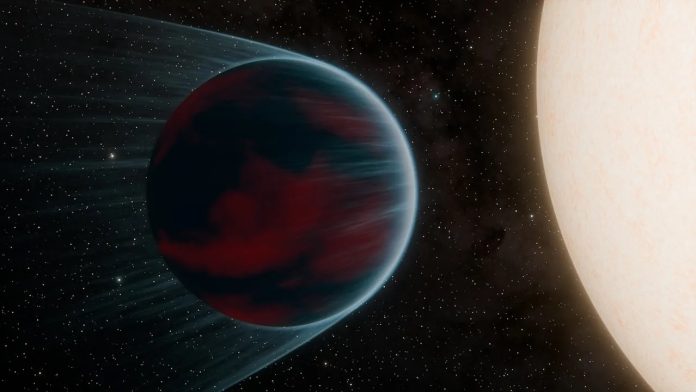
Astronomers have discovered a rare planet, TOI-3261 b, that races around its star in just 21 hours.
Dubbed a “hot Neptune,” this unusual world is about the size of Neptune in our solar system but sits incredibly close to its star, where temperatures soar and conditions are extreme.
This makes it one of only four such planets ever found, offering scientists a chance to learn more about how planets form and evolve in harsh environments.
The planet was spotted using NASA’s TESS (Transiting Exoplanet Survey Satellite) and then confirmed with ground-based telescopes in Australia, Chile, and South Africa.
It belongs to a special group called the “hot Neptune desert”—a category of planets so rare that scientists compare their scarcity to an empty landscape.
Most planets in this category have likely lost their thick atmospheres due to their stars’ intense gravity and heat, making TOI-3261 b a valuable find.
What makes TOI-3261 b special?
TOI-3261 b likely started as a much larger planet, similar to Jupiter. Over billions of years, its close proximity to its star stripped away most of its atmosphere.
This process, called photoevaporation, occurs when energy from the star blows away lighter gas particles.
Additionally, tidal stripping—the star’s gravitational pull—may have removed even more of the atmosphere. These combined effects make it difficult for planets to survive close to their stars, which is why hot Neptunes are so rare.
Interestingly, the planet is about twice as dense as Neptune, suggesting that its lighter gases have been lost, leaving behind a heavier, more compact atmosphere.
Scientists believe it may have formed farther away from its star, where conditions were less intense, before migrating inward.
What’s Next for TOI-3261 b?
The planet’s atmosphere is key to understanding its history. Researchers hope to study it in more detail, potentially using the James Webb Space Telescope.
Observing the planet in infrared light could reveal the “fingerprints” of molecules in its atmosphere, shedding light on the physical processes that shaped it.
TOI-3261 b joins three other ultra-short-period hot Neptunes—LTT-9779 b, TOI-849 b, and TOI-332 b. These discoveries are helping scientists unlock the secrets of planetary formation, especially for giant planets orbiting dangerously close to their stars.
This discovery, led by Emma Nabbie and her team from the University of Southern Queensland, marks an exciting step forward in our understanding of the universe. Their study, titled “Surviving in the Hot Neptune Desert,” was published in The Astronomical Journal in August 2024.
Hot Neptunes may be rare, but each one offers valuable clues about the mysteries of planetary evolution and survival in extreme environments.



